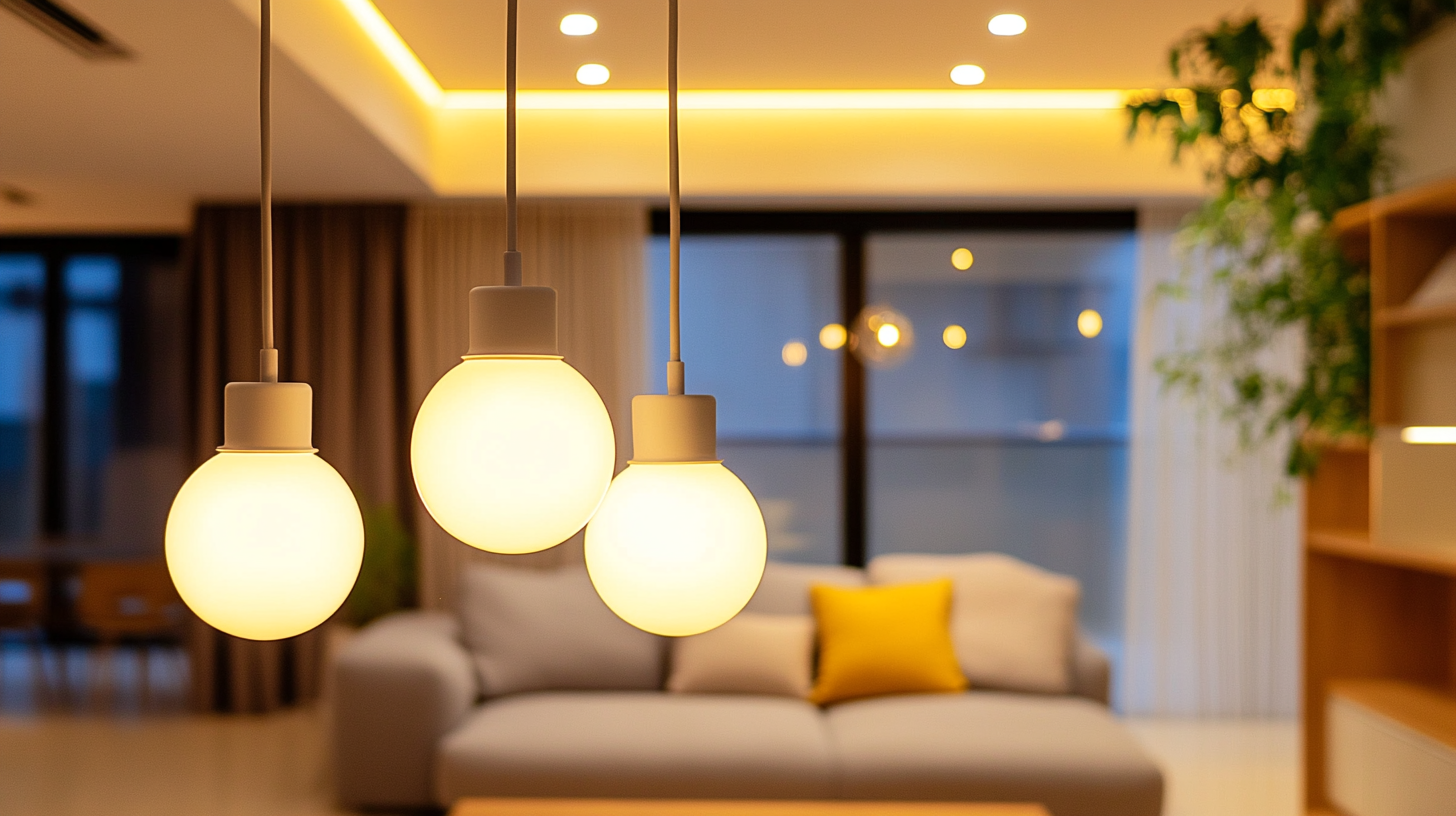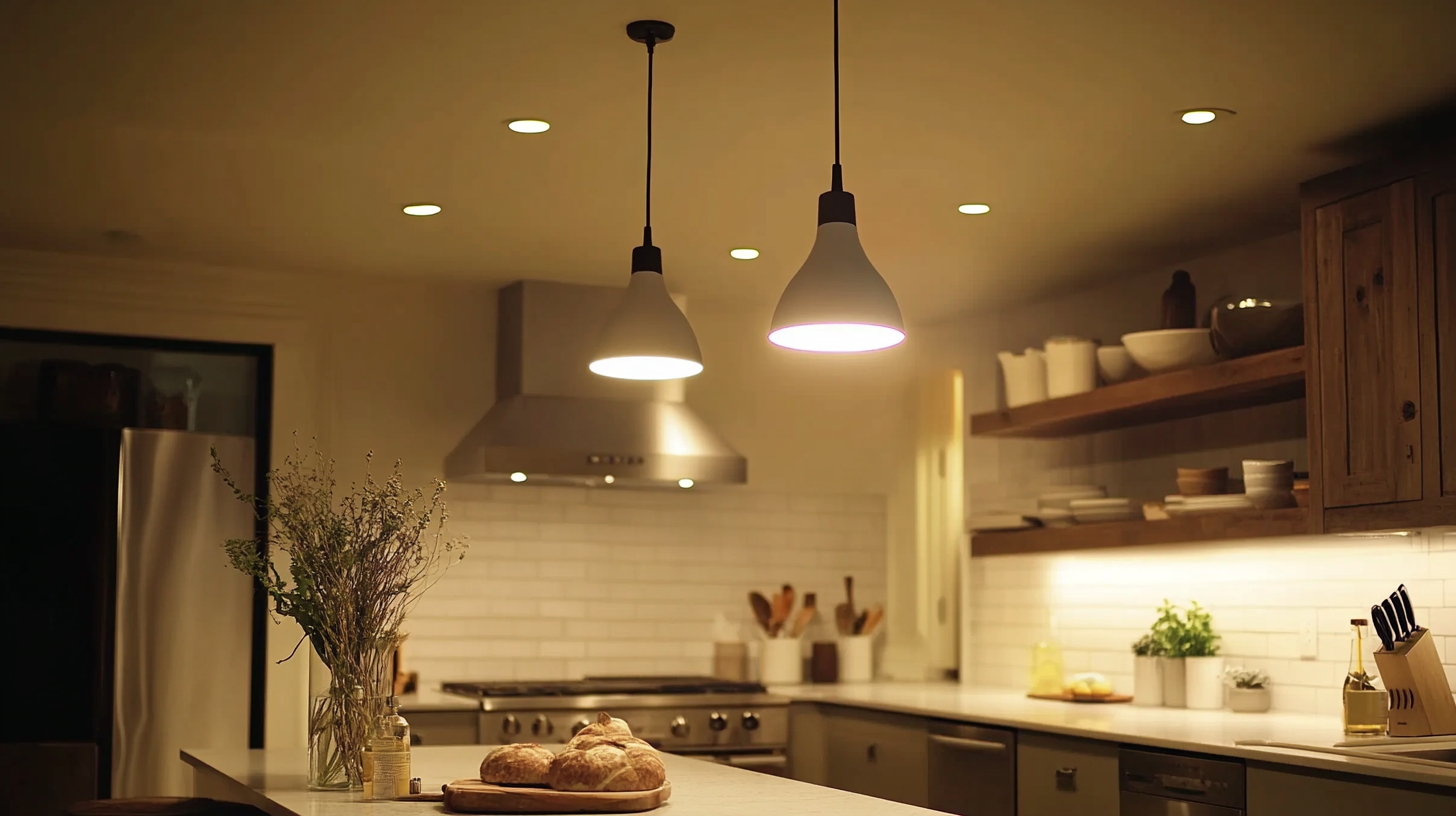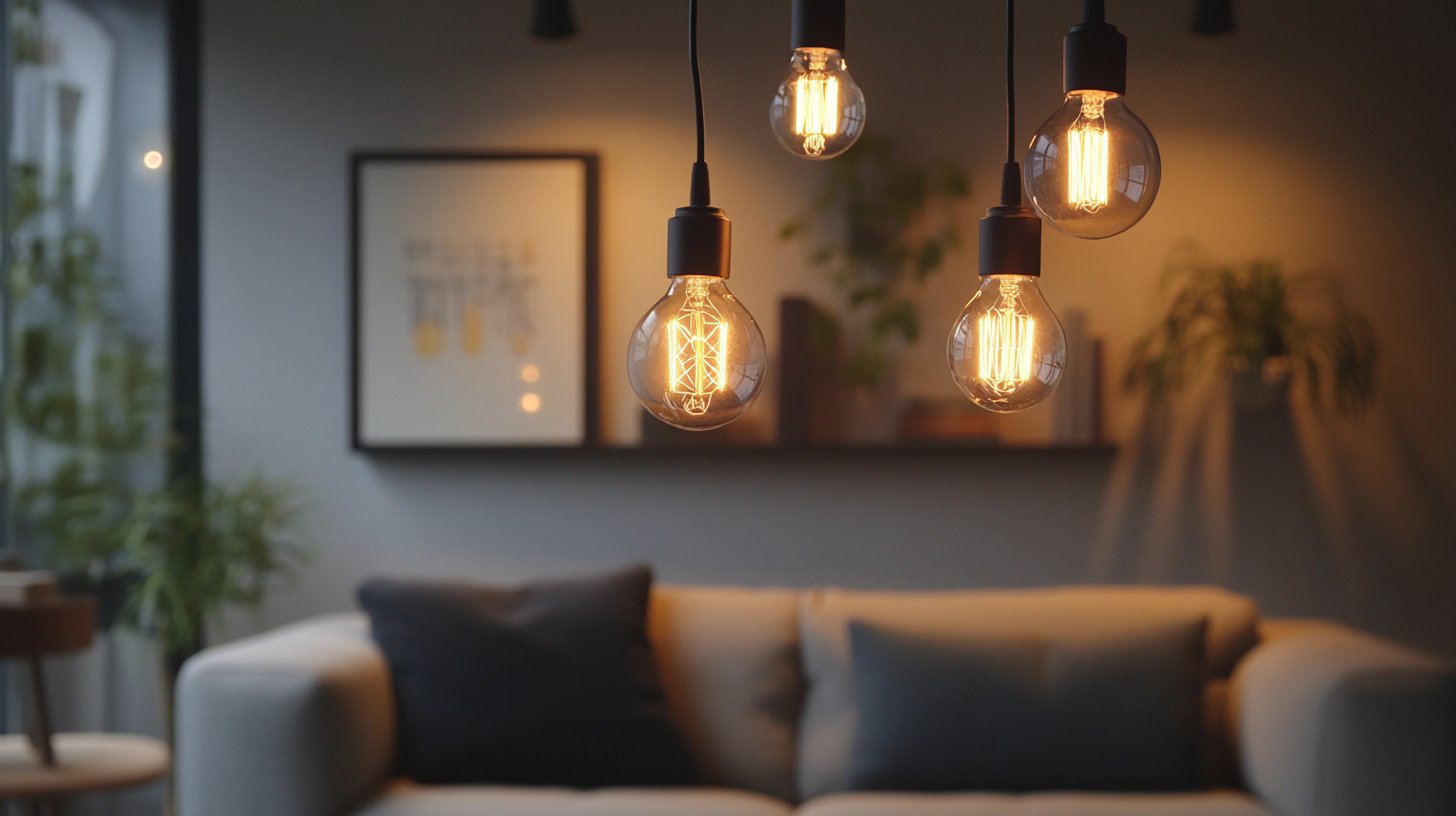Illuminate Your Space with the Versatility of Dimmable LED Light Bulbs
In recent years, the lighting industry has experienced significant advancements in technology, particularly with the rise of Dimmable LED Light Bulbs. According to a report by Grand View Research, the global LED lighting market is expected to reach $105.1 billion by 2025, highlighting the increasing consumer demand for energy-efficient and versatile lighting solutions. Dimmable LED bulbs are at the forefront of this trend, offering not only energy savings but also the flexibility to adjust brightness levels based on individual preferences and settings, making them an essential addition to modern homes and commercial spaces.
The versatility of Dimmable LED Light Bulbs enhances both aesthetics and functionality, allowing for tailored lighting experiences. A study published by the U.S. Department of Energy indicates that LEDs use at least 75% less energy, and last up to 25 times longer than traditional incandescent bulbs. Furthermore, the ability to dim lights means that users can create the ideal ambiance, improve mood, and even reduce electricity costs. As consumers become more aware of the benefits of controlled lighting, Dimmable LED Light Bulbs have emerged as a critical component for illuminating spaces beautifully and efficiently.

Benefits of Dimmable LED Light Bulbs: Enhancing Ambiance and Energy Efficiency
Dimmable LED light bulbs have revolutionized the way we illuminate our spaces. With their ability to adjust brightness, these bulbs not only provide functional lighting but also enhance the ambiance of any room. A report from the U.S. Department of Energy highlights that homeowners can save up to 75% in energy costs by switching from traditional incandescent bulbs to LED lighting, and dimmable options take this efficiency a step further. By utilizing dimmable features, users can effectively reduce their energy consumption even more, especially in spaces that require variable lighting throughout the day.
The versatility of dimmable LED bulbs allows for greater control over the atmosphere in a room. Research from the Lighting Research Center indicates that proper lighting can improve mood and productivity, making dimmable lights perfect for workspaces and living areas alike. By adjusting light levels, individuals can create a warm and inviting environment for gatherings or a calm and focused setting for studying. This adaptability not only supports varied activities but also aligns with the growing trend of personalized home lighting solutions that cater to individual preferences.
Moreover, the longevity of LED bulbs enhances their appeal. According to industry analysis, dimmable LEDs can last up to 25,000 hours, significantly outpacing traditional bulbs which often burn out after just 1,000 hours. This durability means fewer replacements and less environmental waste, contributing to a more sustainable household. As the shift towards energy-efficient lighting continues, embracing the benefits of dimmable LED light bulbs proves to be a smart choice for both style and sustainability.
Understanding the Technology Behind Dimmable LEDs: How They Work and Their Lifespan
Dimmable LED light bulbs have revolutionized how we illuminate our spaces, combining functionality with energy efficiency. Understanding the technology behind these versatile bulbs reveals how they operate and their impressive lifespan. Dimmable LEDs use a specific driver circuit that adjusts the voltage and current supplied to the LED chips, allowing users to modify brightness levels easily. According to a report by the U.S. Department of Energy, LED bulbs can last up to 25,000 hours compared to traditional incandescent bulbs that typically last around 1,000 hours. This longevity not only reduces the frequency of replacements but also contributes to lower maintenance costs.
The technology behind dimmable LEDs includes various designs, such as TRIAC and 0-10V dimming systems. TRIAC dimming is compatible with most standard household dimmers, offering a seamless transition between brightness levels. Meanwhile, the 0-10V system is commonly used in commercial settings, providing precise control over lighting in response to changing needs. A study by the Lighting Research Center noted that the energy savings from using dimmable LED lights could reach up to 80% compared to traditional lighting solutions when combined with smart lighting control systems.
In addition to their remarkable energy efficiency, the ability to adjust brightness levels also enhances the overall ambiance of a space. Research indicates that lighting can significantly influence mood and productivity, making dimmable LEDs an excellent choice for both residential and commercial applications. With their combination of advanced technology, longevity, and energy savings, dimmable LED light bulbs are becoming a preferred choice for consumers looking to create flexible and inviting environments.

Comparative Analysis: Dimmable LED Bulbs vs. Traditional Incandescent Lighting
Dimmable LED light bulbs have revolutionized the lighting industry, providing an energy-efficient alternative to traditional incandescent bulbs. According to a report by the U.S. Department of Energy, LED bulbs use at least 75% less energy than incandescent lighting, which is a significant consideration for homeowners and businesses aiming to reduce their energy consumption and costs. Furthermore, LED bulbs have a longer lifespan, lasting up to 25,000 hours compared to just 1,000 hours for incandescents, which means fewer replacements and less waste over time.
When it comes to versatility, dimmable LED bulbs offer adaptability that incandescent bulbs simply cannot match. They can create various ambiance settings, from bright task lighting to soft, cozy illumination. Industry studies indicate that nearly 70% of consumers prefer adjustable lighting to enhance mood and functionality in their spaces. This preference is particularly evident in dining areas and living rooms, where the ability to control light levels is essential for creating a comfortable environment.
Moreover, the technological advancements in LED lighting have made them increasingly affordable for everyday consumers. While the initial cost of a dimmable LED bulb may be higher than an incandescent, the long-term savings on energy bills—estimated to save consumers over $200 in lifetime energy costs—make them a financially sound choice. As awareness of energy efficiency continues to rise, the shift towards dimmable LED lighting is expected to accelerate, moving consumers further away from traditional incandescent options.

The Impact of Dimmable LEDs on Energy Consumption: Statistics and Savings Potential
Dimmable LED light bulbs are transforming the way we illuminate our spaces while significantly reducing energy consumption. In regions like Kazakhstan and Russia, the adoption of LED lighting technology offers a promising outlook for sustainability and energy efficiency. Traditional lighting systems have long contributed to high energy consumption, leading to increased CO2 emissions. The shift towards dimmable LEDs not only enhances flexibility in lighting environments but also plays a crucial role in minimizing energy usage, showcasing how modern solutions can meet the rising demand for sustainable living.
Statistics reveal that dimmable LEDs can reduce energy consumption dramatically compared to conventional lighting. For instance, through retrofitting traditional bulbs with dimmable LED options, households and industries can achieve savings of up to 70% on their lighting bills. The ability to adjust brightness based on specific needs not only conserves energy but also extends the lifespan of the bulbs, further contributing to reduced waste. This synergy between functionality and eco-friendliness underscores the importance of integrating advanced lighting technologies in our living and working environments.
Furthermore, as cities engage in smart lighting initiatives, the benefits of dimmable LED technology become even more pronounced. Upgraded street lighting systems not only enhance public safety and community experience but also optimize energy consumption through adaptive lighting solutions. By exploring the full potential of dimmable LEDs, we can pave the way for a more sustainable and energy-efficient future, emphasizing a collective commitment to reducing our environmental footprint.
Design Considerations: Choosing the Right Dimmable LED for Different Spaces
When it comes to creating the perfect ambiance in any space, choosing the right dimmable LED light bulb is crucial. Understanding the specific needs of different areas, such as your home office, living room, or bedroom, allows you to enhance both functionality and aesthetics. For instance, in a home office, opting for a dimmable LED that can adjust from bright white light for focused tasks to a warmer hue for relaxation can significantly improve productivity and comfort.
In the living room, where versatility is key, consider dimmable LED bulbs that can create a cozy atmosphere for gatherings or provide ample lighting for reading. Popular options include stylish desk lamps that not only serve a practical purpose but also complement your décor. As highlighted in the latest guide on "The 7 Best Desk Lamps of 2025," many top-rated lamps now incorporate advanced dimming technology, allowing users to customize their lighting easily.
Finally, don't overlook the bedroom, where a softer touch is often preferred. Dimmable LEDs can transform a stark white ceiling fixture into a calming light source for a restful environment, making it easier to wind down before sleep. By carefully selecting dimmable options tailored to each space, you can achieve a harmonious balance of brightness and mood throughout your home.

